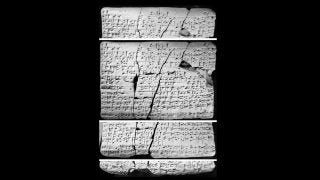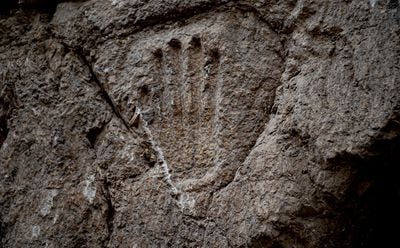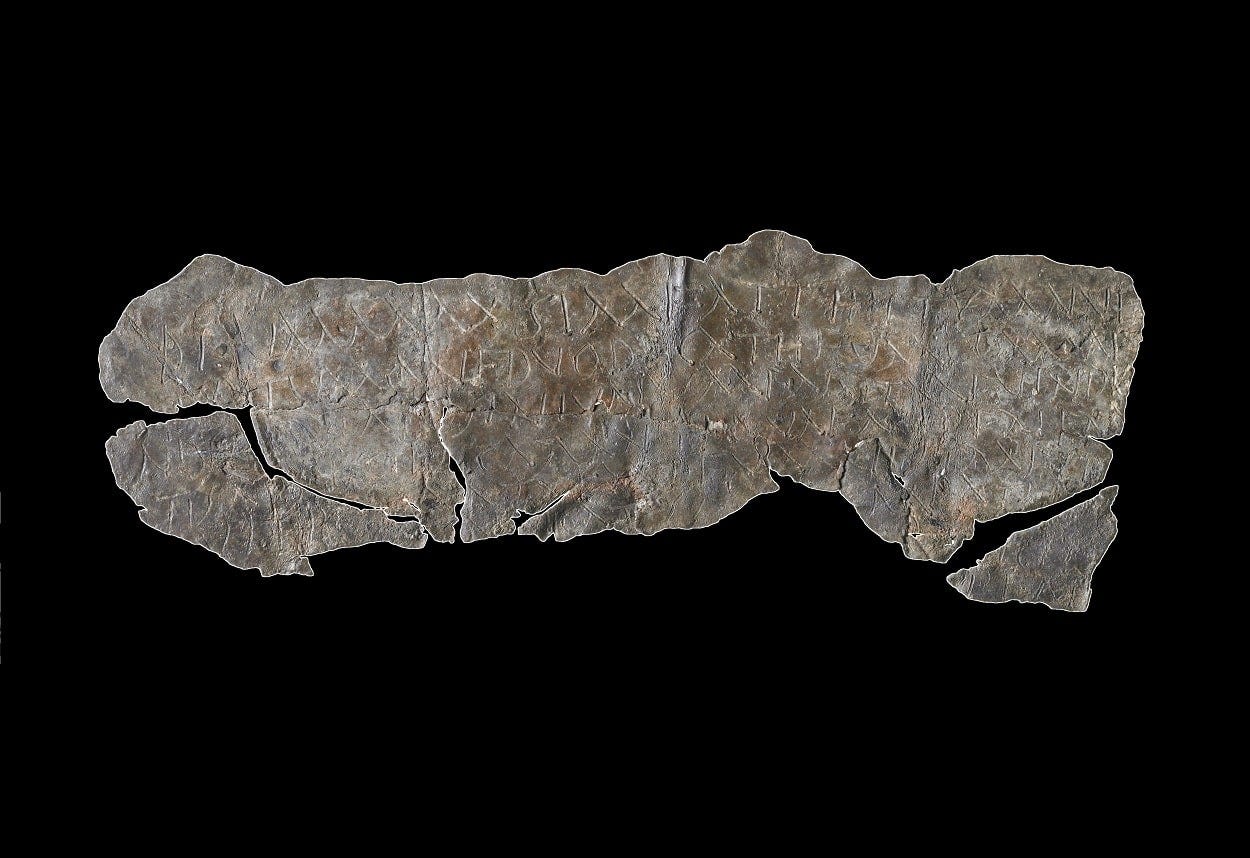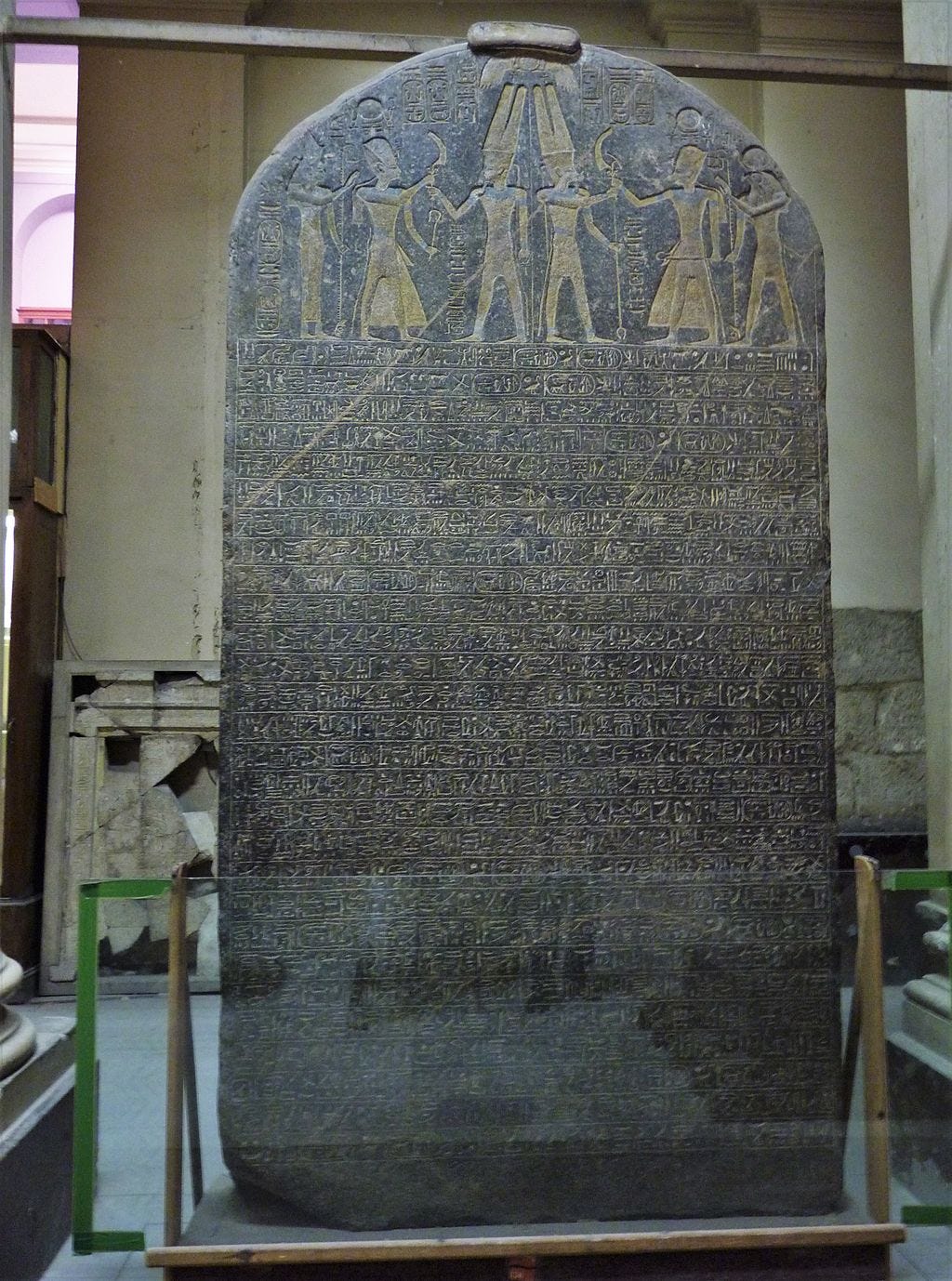In The Field…
A Lost Canaanite Language Now Decoded
Live Science reports:
Two ancient clay tablets discovered in Iraq and covered from top to bottom in cuneiform writing contain details of a "lost" Canaanite language that has remarkable similarities with ancient Hebrew.
The tablets, thought to be nearly 4,000 years old, record phrases in the almost unknown language of the Amorite people, who were originally from Canaan — the area that's roughly now Syria, Israel and Jordan — but who later founded a kingdom in Mesopotamia. These phrases are placed alongside translations in the Akkadian language, which can be read by modern scholars.
Mysterious Hand Print Discovered in 1,000 Year-Old Moat Wall
A moat that once stood in the way of the invading Crusader armies has been discovered beneath the Old City of Jerusalem, bringing to life some of the bloodiest and most iconic battles of the later Middle Ages. While excavating the ancient line of defense, archaeologists also happened upon a handprint carved into the wall of the moat, yet are unable to offer an explanation as to who made the imprint or what significance it may hold
More at IFL Science.
Historic Mosques and Ancient Landmarks Reduced to Rubble from Turkey / Syria Earthquake
Middle East Eye reports:
The catastrophic 7.8 magnitude earthquake, which has left thousands of people dead in Turkey and northwest Syria, has also destroyed several of the region's historical monuments that had survived for centuries.
The earthquake, which has claimed the lives of at least 4,000 people in both countries, devastated sites in the Turkish regions of Gaziantep and Malatya and the Syrian province of Aleppo.
After Monday's initial earthquake, the 2,000 year-old Gaziantep castle was heavily damaged, with many of its walls and watch towers reduced to rubble.
Researchers Found Similar Descriptions in the Book of Revelation and Ancient Curse Tablets
A research project headed by Dr. Michael Hölscher of Johannes Gutenberg University Mainz (JGU), has uncovered that the book of revelation has some descriptions and phrases similar to ancient curse tablets.
In the ancient world, curse tablets were widely used and in high demand. On thin sheets of lead, the corresponding incantations were frequently written or carved with the intention of harming a foe or rival. Curse tablets and the associated rituals were used widely as the Roman Empire grew; they have been discovered at locations from Egypt to Britain.
You can read more at Arkeonews.
Site News
Currently available are podcast episodes:
You can also listen to them on:
Quote Of The Month
The way to gain a good reputation is to endeavor to be what you desire to appear. - Socrates
Resources
The 'Queens of the Arabs' during the Neo-Assyrian Period (Podcast)
Preserving our antiquities: Assyrian archaeologist inspects ancient sites in Northern Iraq (Podcast)
Museum Exhibits
Lynn H. Wood Archaeology Museum (Southern Adventist University) - Exhibition Featuring Artifacts from Ancient Israel Opens Soon
Ashmolean Museum (Oxford) - Labyrinth: Knossos, Myth & Reality
Michael C. Carlos Museum (Emory University) - Life and the Afterlife: Ancient Egyptian Art from the Senusret Collection
Recommended Books
The Dawn of Israel: A History of Canaan in the Second Millennium BCE
By Lester L. Grabbe
In this companion volume to his bestselling Ancient Israel: What Do We Know and How Do We Know It? Lester L. Grabbe provides the background history of the main ancient Near Eastern peoples and empires: Babylonia, Assyria, Urartu, Hittites, Amorites, Egyptians.
Grabbe's focus is on Palestine/Canaan and covers the early second millennium, including the Middle Bronze Age and the Second Intermediate Period and Hyksos rule of Egypt. Grabbe also addresses the question of a 'patriarchal period'. The main focus of the book is on the second half of the second millennium: Late Bronze and early Iron Age, the Egyptian New Kingdom, the Amarna letters, the Sea Peoples, the question of 'the exodus', the early settlements in the hill country of Palestine, and the first mention of Israel in the Merenptah inscription. Archaeology and the contribution of the social sciences both feature heavily, as does inscriptional and iconographic material. As such this volume provides a fascinating portrayal of ancient Israel and this definitive work by one of the world's leading biblical historians will be of interest to all students and scholars of biblical history.
Artifact Of The Month
Currently located in the Egyptian Museum in Cairo, Egypt, the Merneptah Stela dates to the reign of the Egyptian Pharaoh Merneptah (1213 - 1203 BCE). Merneptah was the fourth Pharaoh of the Nineteenth Dynasty and son of the great Pharaoh, Ramesses II. What makes this stela fascinating is the fact that it contains the oldest reference to a little known people referred to as Israel.










